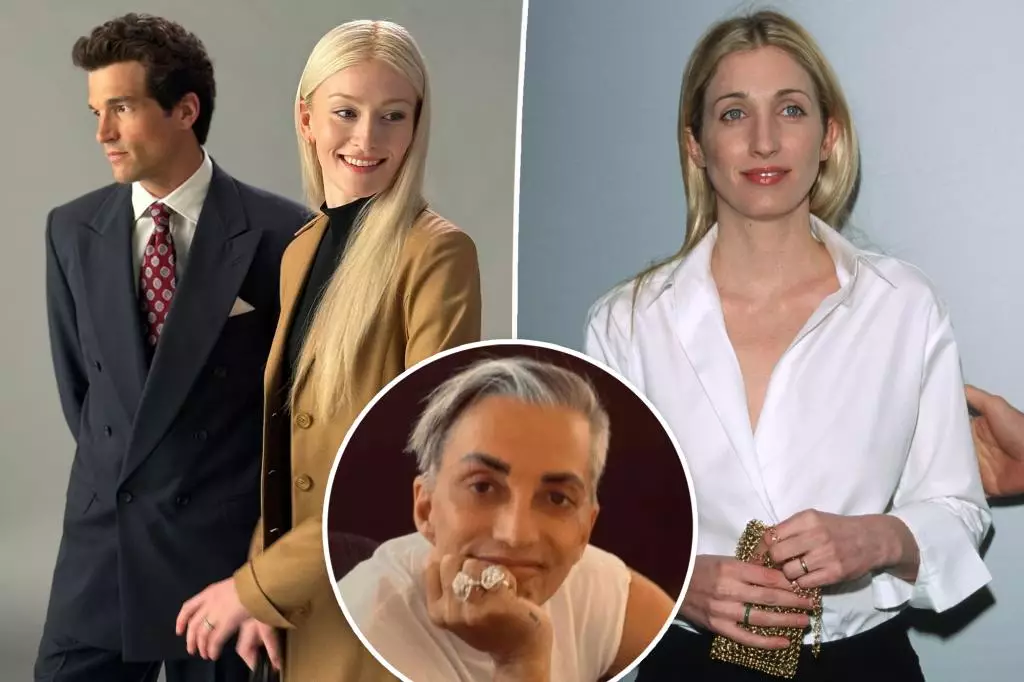When Ryan Murphy teased the world with a glimpse into his upcoming FX series, “American Love Story,” expectations were sky-high. The narrative centers around the enigmatic Carolyn Bessette-Kennedy and her husband, John F. Kennedy Jr., figures whose allure has long captivated public imagination. Yet, the excitement swiftly turned to criticism when the first look was unveiled. Social media erupted, primarily over the portrayal of Bessette-Kennedy, or rather, the perceived betrayal of her essence. Sarah Pidgeon, who takes on the role, was seen in costume that many felt missed the mark. This initial visual representation—a sad-looking camel overcoat and a seemingly “burnt” white-blond wig—ignited a fervent conversation about authenticity and the burden of embodying an icon.
The backlash was not just superficial; it struck at the heart of an ongoing cultural fascination with Bessette-Kennedy’s style. The opinions of beauty experts, like her friend and renowned colorist Brad Johns, were quickly brought to the forefront. He offered a heartfelt critique, emphasizing that Bessette-Kennedy’s hair was never meant to be ashy or lifeless. Such a misrepresentation could tarnish the legacy of a woman who, through her fashion sense and elegance, changed the narrative of public figures’ sartorial choices in the late ’90s.
Hair as a Canvas: The Artistry Behind Bessette-Kennedy’s Look
Johns’ reflections provide far more than just a stylist’s input; they unlock a window into Bessette-Kennedy’s persona. When he first met her, she was not just requesting a change; she was entrusting him with her identity. Their collaboration propelled her from a mere individual into a style icon. She didn’t simply wear clothes; she transformed them into expressions of her individuality. Reflecting on this bond, Johns stated that Bessette-Kennedy had an uncanny ability to draw others in despite her lack of makeup—a testament to her innate beauty and character.
It’s a captivating narrative where hair transitions from being a mere aesthetic choice to a symbol of growth and evolution. The craftsmanship of Johns, whose “chunking” technique elevated Bessette-Kennedy’s locks into a golden halo, served as an extension of her personality, enhancing her natural allure. In an age where celebrity culture frequently flaunts overt glamour, Bessette-Kennedy epitomized a more restrained elegance, making her an everlasting muse.
Ryan Murphy’s Vision: A Balancing Act of Nostalgia and Authenticity
As reactions poured in, Ryan Murphy attempted to quell the discontent. His assertion that the initial images were merely a “work in progress” reveals the unpredictable nature of creative processes in television. The friction between artistic interpretation and viewer-historic expectations often creates a tumultuous landscape. While the casting and stylistic choices are pivotal, they draw attention to a broader cultural conversation about how we honor the lives and legacies of those we idolize.
Murphy’s promise to involve a committee of fashion bloggers dedicated to Bessette-Kennedy’s aesthetic further emphasizes the series’ commitment to authenticity. By engaging experts who have studied Bessette-Kennedy’s fashion sense, the creators aim to present a portrayal that respects her as a figure in pop culture and beyond. The meticulous gathering of vintage pieces Johnny secures—designer items Bessette-Kennedy herself was known to wear—reflects an earnest effort to recreate the nostalgic essence of the ’90s that she embodied.
The Cultural Significance of Style Icons
Bessette-Kennedy wasn’t just a fashionista; she was a cultural beacon for a generation navigating the complexities of modern femininity. The current discussions surrounding her representation in “American Love Story” reveal much more than a mere criticism of costume selection; they provide insights into how public figures can shape societal beauty standards. The impact of Bessette-Kennedy’s style — known for its simplicity yet undeniable sophistication — continues to resonate with audiences; her ability to represent a blend of privilege and relatability makes her an enduring figure of fascination.
Murphy’s endeavor to resurrect her story not only brings her narrative back to the forefront but also compels contemporary audiences to reflect on how they perceive and interact with realms of legacy, nostalgia, and the unending cycle of fashion. In an era rife with the rapid evolution of style, taking time to honor iconic figures like Carolyn Bessette-Kennedy can provoke profound conversations about identity and the role of tradition in forming individual expression.
In essence, the unveiling of “American Love Story” appears to be an intricate dance between homage and interpretation, balancing the needs of a modern audience with the legacy of its subject. The series teams need to listen and adapt, ensuring that Carolyn’s story—and her inimitable style—are conveyed with the elegance deserving of an icon. As we await further developments in the portrayal of this remarkable woman, one thing remains clear: her influence in the realms of fashion and identity continues to inspire and provoke, challenging us to rethink what it means to embody style and grace.

